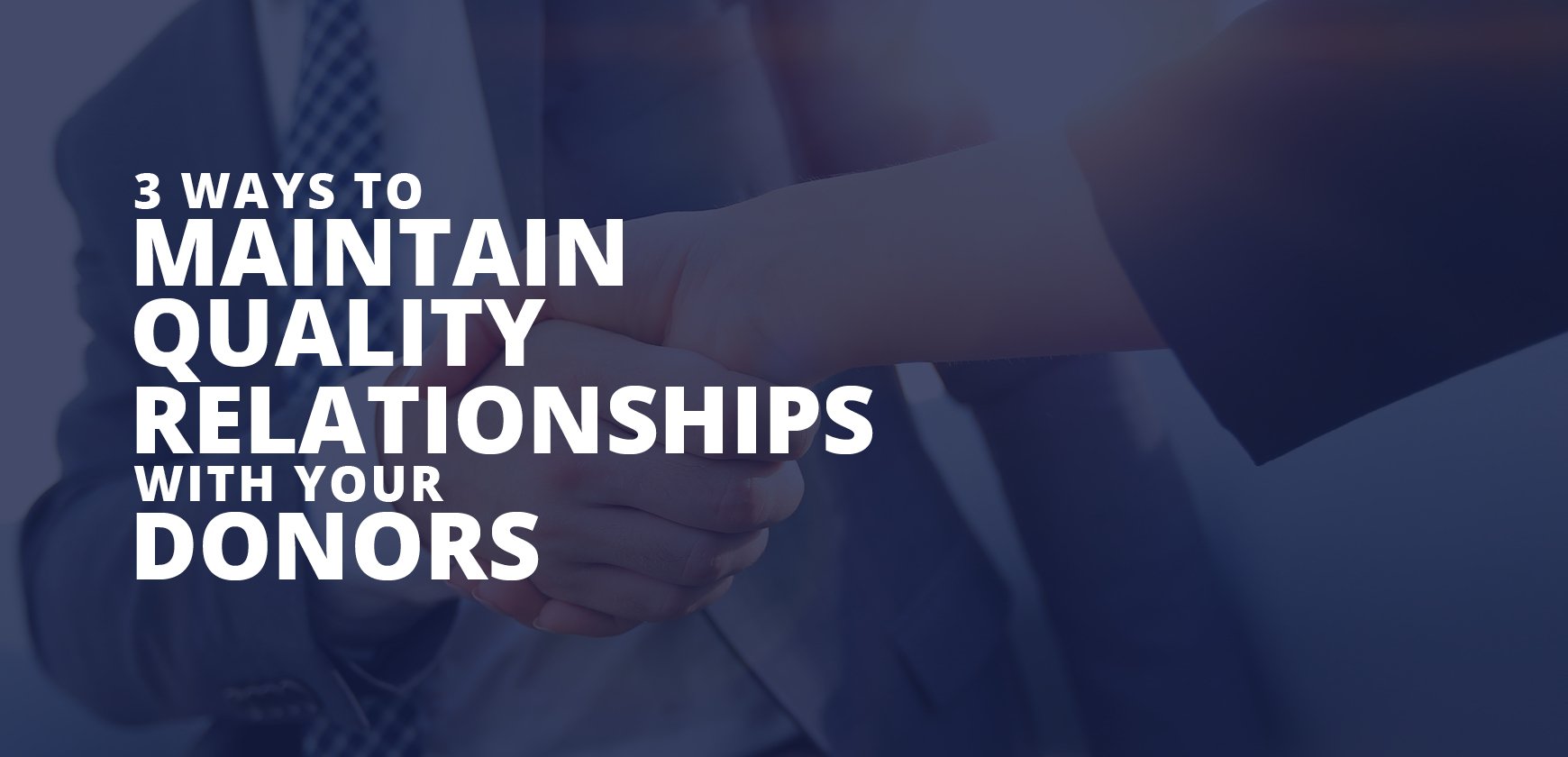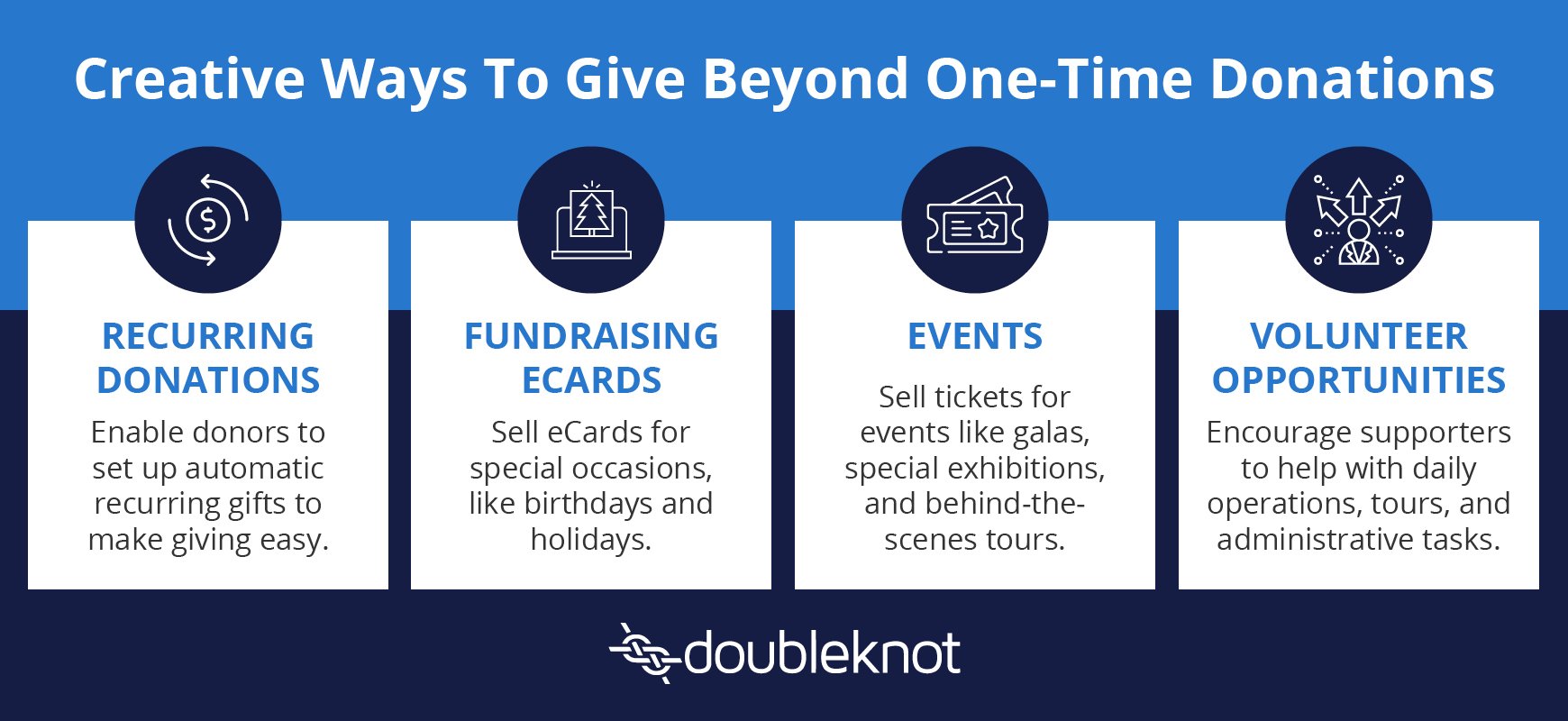3 Ways to Maintain Quality Relationships With Your Donors

Behind every successful organization is a donor community that is passionate about your cause. A donation might be a transaction, but the relationship with that donor shouldn't be. In the world of cultural organizations, where passion and appreciation run deep, nurturing these bonds is both an art and a science.
Keeping donors engaged can be challenging, though. As society evolves, so do people’s interests and preferences. What was popular or relevant a decade ago might not capture your donor’s attention as well today. What’s more, you’re tasked with navigating generational differences in how different age groups prefer to be engaged.
To help you overcome these challenges and maintain donor relationships, we’ll explore three strategies you can implement today. Let’s get started!
Provide Multiple Ways to Give.
Some donors might be satisfied with regularly donating online, but you’re more likely to inspire donors to keep giving by offering multiple opportunities for supporting your organization. After all, 97% of donors want flexibility in where and how they give to causes they care about, according to 360MatchPro’s fundraising statistics.
Whether you run an aquarium, museum, or performing arts organization, your donors want creativity in the ways they support your cause. Here are four methods that your cultural organization can use to drive support:

- Recurring Donations: Make supporting your cause easy by allowing donors to set up automated recurring gifts. According to that same statistics page we just referenced, recurring donors give 42% more per year than one-time donors. Not only will you inspire continued support, but you’ll also raise more for your mission.
- Fundraising eCards: Sell eCards as a way for donors to celebrate special occasions (like birthdays and holidays) while supporting your organization. The recipient will appreciate the gesture, while your organization will receive a donation. By branding your eCards to your organization, you’ll get the added benefit of spreading awareness of your cause.
- Events: Host events where donors can contribute through ticket purchases. You might host an annual gala, performances, special exhibitions, or workshops to give them something in return for their contributions. You can even make these events exclusive to donors to give them a sense of deeper involvement.
- Volunteering: Support doesn’t have to be solely financial. Donors can engage hands-on by dedicating their time and expertise. This can range from helping in daily operations, guiding tours, or assisting in administrative tasks.
Each of these methods provides a unique way for donors to support your organization and help continue to enrich society. When you decide which giving opportunities you’ll offer, let supporters know. You might feature them on your website, promote them in your newsletter, or mention them directly to donors.
Express Gratitude to Strengthen Donor Relationships.
Your donors empower your organization to pursue its mission. They deserve some appreciation for their generous contributions.
Put yourself in a donor’s shoes for a second. Let’s say you gave $100 to one nonprofit that never sent any acknowledgment beyond a tax receipt. Feeling a little underappreciated, you donate the same amount to another organization with a similar mission. Their donor relations officer responded by personally calling you and highlighting how your gift would be used to help that organization make a difference.
Next time you’re feeling generous, wouldn’t you be more likely to donate to the organization that was clearly appreciative and transparent about how they’ll spend your contribution? When you think about it this way, it’s not hard to believe that one of the primary drivers of donor cultivation is proactive recognition.
How to Get Creative With Donor Recognition
If you don’t have a recognition plan in place, now is the time to create one. A timely, heartfelt “thank you” can go a long way in cultivating donor relationships. You don’t have to stick to traditional approaches either.
eCardWidget’s donor recognition guide explains, “Even doing something as easy as formatting your donor recognition letters as eCards can elicit a positive response.” This creativity adds an extra level of personalization and is more likely to stick with your donors than generic gratitude emails.
To tap into this strategy, turn to an eCard creation platform. Create one or two designs that use your branding. Then, whenever someone gives to your nonprofit, send the eCard alongside a personal note of appreciation. This strategy works for a handful of reasons, such as:
- Timeliness: eCards can be sent immediately, so donors know you received their contributions. You won’t have to wait long since eCards can be sent directly to supporters’ inboxes!
- Cost Effectiveness: eCards are generally less expensive than traditional printed cards, eliminating costs associated with printing and postage.
- Multimedia Elements: Unlike traditional cards, eCards can include interactive elements such as videos or animations to make the appreciation message more engaging. This transforms it into a memorable keepsake for the recipient!
Beyond everyday appreciation, you might use your thank you eCards to thank donors on the anniversary of their first gift or when they reach certain donation milestones. No matter your approach, every donor deserves recognition, regardless of how much they give.
Provide Opportunities for Donor Feedback.
You want to keep your donors satisfied, and there is no better way to do that than by inviting them to share their opinions. Think of accepting feedback as another way to thank donors. By listening to their suggestions and acting on them, you’ll communicate that their opinions matter, deepening their connections to your cause.
With the right tools, it’s easy for your organization to send out regular surveys or feedback forms. From the perspective of building donor relationships, you’ll be able to build trust by demonstrating a commitment to transparency and continuous improvement. You can address any concerns before they escalate, make informed decisions about your programs, and ensure you’re reaching donors effectively.
Let’s say you’re in charge of donor relations at a museum. Using your museum’s software, you might send out a survey seeking supporters’ feedback. When doing this, design questions to gather insights that’ll enhance supporter relationships, improve museum offerings, and ensure alignment between your museum’s operations and donor expectations. For example, you might ask questions like:
- What prompted your initial donation to our museum?
- How do you prefer to be recognized for your contributions?
- Are there any programs or exhibits that you feel particularly passionate about?
- What types of exhibitions or events would you like to see in the future?
- Are there other ways you'd like to support our museum beyond financial contributions, such as by volunteering?
- Are there areas where you feel we could improve our museum?
Overall, feedback loops keep donors engaged and can lead to improved experiences. You’ll develop a two-way communication channel, and this reciprocal relationship will encourage donors to remain active partners in your mission.
Wrapping Up: Moving Forward With Strengthening Donor Relationships
The strongest donor relationships transcend transactional interactions—instead, they’re built on shared dreams and aspirations. Show your donors you value them for more than their financial contributions by providing engaging ways to support your cause and share feedback. And don’t underestimate the value of a thoughtful appreciation message!
Ensuring your donors continue supporting your cause requires you to intentionally cultivate these relationships and ensure they feel like a valued part of your cause. After all, they’re more than just financial contributors; they’re equal partners in your mission.
